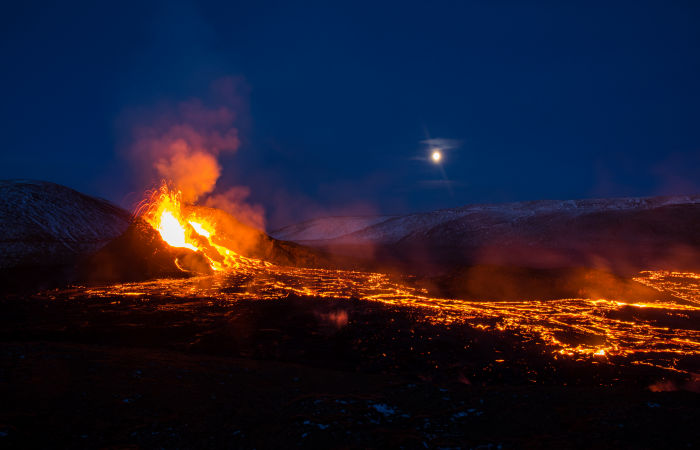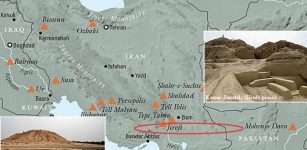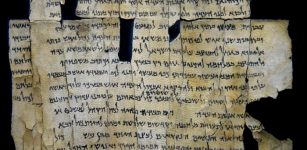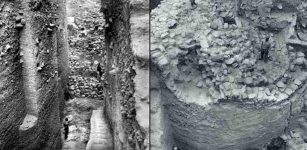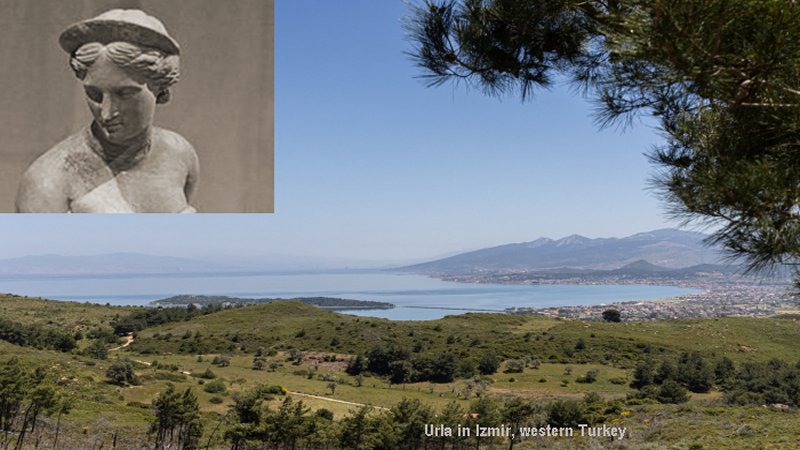Unexpected Discovery – Medieval Monks Recorded Mysterious Volcanic Eruptions
Conny Waters – MessageToEagle.com – By observing the night sky, medieval monks unwittingly recorded some of history’s largest volcanic eruptions. An international team of researchers, led by the University of Geneva (UNIGE), drew on readings of 12th and 13th century European and Middle Eastern chronicles, along with ice core and tree ring data, to accurately date some of the biggest volcanic eruptions the world has ever seen.
Their results, reported in the journal Nature, uncover new information about one of the most volcanically active periods in Earth’s history, which some think helped to trigger the Little Ice Age, a long interval of cooling that saw the advance of European glaciers.
a, Commentary on the Apocalypse by Beatus of Liébana, from the monastery of Santo Domingo de Silos, near Burgos, Spain, 1090–1109 CE. Credit: British Library Board (Add. MS 11695, f108r). The text at the bottom of the miniature, between the dark circle on the left representing a total solar eclipse and the red circle on the right representing a total lunar eclipse, reads: “hic sol obscurabitur et luna in sanguine versa est” (“and the Sun was obscured and the Moon turned into blood”). The blood-red eclipsed Moon was seen as one possible sign of the Apocalypse. Lunar occultation descriptions from the Middle Ages often follow the Book of Revelation, suggesting that the Bible provided justification and inspiration for recording lunar eclipses and their colour. b, Thirteenth-century depiction of a lunar eclipse by Johannes de Sacrobosco. Credit: The New York Public Library (De Sphaera, MssCol 2557, f112v). c, Facsimile of the Meigetsuki (明月記) diary by Fujiwara no Teika (藤原定家) describing the total lunar eclipse of 2 December 1229 CE. Credit: Meigetsuki, vol. 4, pp. 517, 2000. Reizei-ke Shiguretei Bunko. Tokyo: Asahi Shinbunsha. Teika mentions this event twice. The figure shows the first entry: “[…] the sky was free of clouds into the distance and the Moon over the hills emerged in eclipse, total for a little while, [its light] meagre as on a dark night. About an hour later it brightened gradually, and after it was extinguished [during the eclipse] it was especially luminous”. The second entry, written four days later, details the unusual coloration of the Moon. Over the centuries, several portions of the Meigetsuki were cut apart, and the entry for 6 December 1229 CE is held in a private collection
It took the researchers almost five years to examine hundreds of annals and chronicles from across Europe and the Middle East, in search of references to total lunar eclipses and their colouration. Total lunar eclipses occur when the moon passes into the Earth’s shadow. Typically, the moon remains visible as a reddish orb because it is still bathed in sunlight bent round the Earth by its atmosphere. But after a very large volcanic eruption, there can be so much dust in the stratosphere – the middle part of the atmosphere starting roughly where commercial aircraft fly – that the eclipsed moon almost disappears.
Medieval chroniclers recorded and described all kinds of historical events, including the deeds of kings and popes, important battles, and natural disasters and famines. Just as noteworthy were the celestial phenomena that might foretell such calamities. Mindful of the Book of Revelation, a vision of the end times that speaks of a blood-red moon, the monks were especially careful to take note of the moon’s coloration. Of the 64 total lunar eclipses that occurred in Europe between 1100 and 1300, the chroniclers had faithfully documented 51. In five of these cases, they also reported that the moon was exceptionally dark.
The contribution of Japanese scribes
Asked what made him connect the monks’ records of the brightness and colour of the eclipsed moon with volcanic gloom, the lead author of the work, Sébastien Guillet, senior research associate at the Institute for environmental sciences at the UNIGE, said: “I was listening to Pink Floyd’s Dark Side of the Moon album when I realised that the darkest lunar eclipses all occurred within a year or so of major volcanic eruptions. Since we know the exact days of the eclipses, it opened the possibility of using the sightings to narrow down when the eruptions must have happened.”
The researchers found that scribes in Japan took equal note of lunar eclipses. One of the best known, Fujiwara no Teika, wrote of an unprecedented dark eclipse observed on 2 December 1229: ‘the old folk had never seen it like this time, with the location of the disk of the Moon not visible, just as if it had disappeared during the eclipse… It was truly something to fear.’ The stratospheric dust from large volcanic eruptions was not only responsible for the vanishing moon. It also cooled summer temperatures by limiting the sunlight reaching the Earth’s surface. This in turn could bring ruin to agricultural crops.
Cross-checking text and data
“We know from previous work that strong tropical eruptions can induce global cooling on the order of roughly 1°C over a few years,” said Markus Stoffel, full professor at the Institute for environmental sciences at the UNIGE and last author of the study, a specialist in converting measurements of tree rings into climate data, who co-designed the study. “They can also lead to rainfall anomalies with droughts in one place and floods in another.”
Despite these effects, people at the time could not have imagined that the poor harvests or the unusual lunar eclipses had anything to do with volcanoes – the eruptions themselves were all but one undocumented. “We only knew about these eruptions because they left traces in the ice of Antarctica and Greenland,” said co-author Clive Oppenheimer, professor at the Department of Geography at the University of Cambridge. “By putting together the information from ice cores and the descriptions from medieval texts we can now make better estimates of when and where some of the biggest eruptions of this period occurred.”
Climate and society affected
To make the most of this integration, Sébastien Guillet worked with climate modellers to compute the most likely timing of the eruptions. “Knowing the season when the volcanoes erupted is essential, as it influences the spread of the volcanic dust and the cooling and other climate anomalies associated with these eruptions,” he said.
The eruption site of Geldingadalir in Fagradalsfjall mountain on Reykjanes in Iceland. Credit: Adobe Stock – Gestur
As well as helping to narrow down the timing and intensity of these events, what makes the findings significant is that the interval from 1100 to 1300 is known from ice core evidence to be one of the most volcanically active periods in history.
Of the 15 eruptions considered in the new study, one in the mid-13th century rivals the famous 1815 eruption of Tambora that brought on ‘the year without a summer’ of 1816. The collective effect of the medieval eruptions on Earth’s climate may have led to the Little Ice Age, when winter ice fairs were held on the frozen rivers of Europe.
“Improving our knowledge of these otherwise mysterious eruptions, is crucial to understanding whether and how past volcanism affected not only climate but also society during the Middle Ages,” concludes the researcher.
The study was published in Nature
Written by Conny Waters – MessageToEagle.com – AncientPages.com Staff Writer


